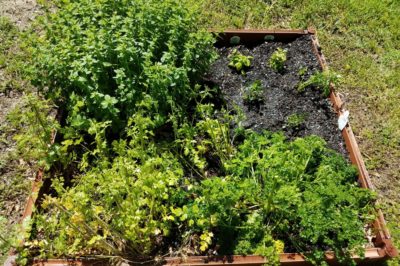One- and two-year-old herbs
This group includes many of our traditional culinary herbs such as parsley, chervil, savory, dill, marjoram and cress, but also ancient cultivated plants such as garden melon or purslane. They are usually quite robust and can be sown directly into the bed in spring. The best time for this depends on the concrete type— In March you can start with parsley, chervil and cress. Dill, garden melde, and rocket in April are followed by nasturtium, purslane and savory in May. With the sowing of marjoram you should wait until after the ice melts.
Other kitchen and wild herbs
Many herbs of this group are native or naturalized to Central Europe and are adapted to the temperate, rainy climate of that region. They also get along well in the semi-shade, with other types like woodruff or bear’s garlic loving shady places under trees. Plants that need moist, deep soil are: Chives and lovage, ancient medicinal plants such as valerian and lemon balm, strong aromatic herbs such as horseradish, and species that have fallen into oblivion in the meantime, such as wild rocket, sorrel, burrito or watercress.
Mediterranean Herbs
The exact opposite of kitchen and wild herbs are the sun-hungry herbs of the Mediterranean region. Thyme, oregano, sage, rosemary, hyssop, the aromatic curry herb or the lemon verbena prefer very warm, protected locations on barren and stony soils. Many varieties are very sensitive to frost – especially rosemary, laurel and lemon verbena – and should therefore be cultivated in pots.
Artemisia
Artemisia is the botanical generic name of a whole series of ancient aromatic and medicinal plants such as wormwood, mugwort, rowan or tarragon. The latter is known above all for its fine cuisine, where its sweet, anise-like taste lends aroma and refinement to fish dishes and delicate sauces. This herbal family contains many bitter substances, but also substances that are toxic in higher concentrations – a well-known example is the alkaloid absinthe. Artemisia promote the digestion of fat and help with numerous other complaints. In former times, they were considered as strong “protection and magic-herbs” and were used for smoking.
Hint
If you want to grow something very special in your herb garden, you are guaranteed to find what you are looking for in the Asian exotics. Here grow different kinds of coriander, shiso, Thai basil, lemon grass, ginger, turmeric, Kaffir lime or even wasabi.
